
| Southern Circuit (2. Southern Ranges ) |
Day 6 – Wylly Plateau to Ooze Lake (10½ hours) (6.5km - 320m ascent – 440m descent) |
|
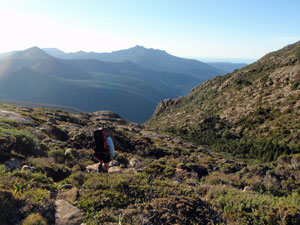 Heading down the descent gully on the east side of PB |
|
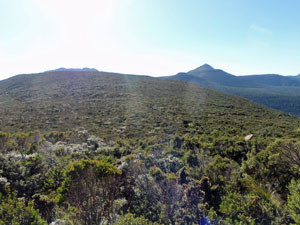 Dense scrub near Low Camp |
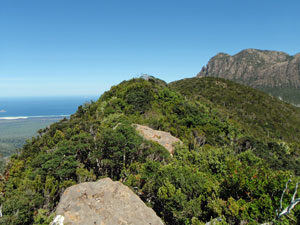 The sharp scrubby ridge of Kameruka Moraine |
|
||
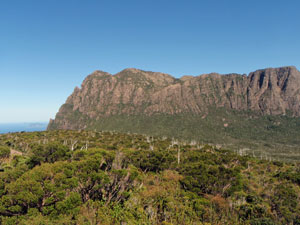 Looking back to the descent gully on PB |
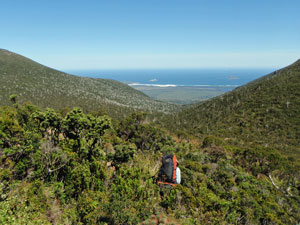 A rare viewpoint - from above Tramp Camp to the sea |
|
|
||
 Ghosts of the plateau - burnt King Billy pines |
Ahead lay a sea of dense green scrub, punctuated by the occasional white ghosts of dead King Billy pines. The scrub had regenerated vigorously after the fires of a decade ago, but sadly very few live pines remained.
|
 ... and the "pad" through it |
|
|
|
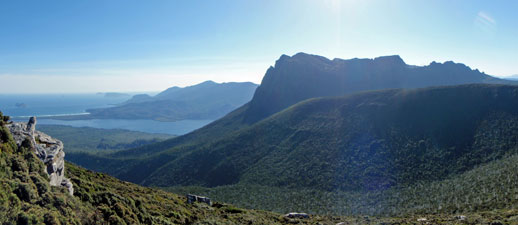 The one grand panorama of the day - PB from the unnamed knoll just before Wylly Plateau |
|
 Pastel sunset over the Ironbound Range (from Wylly Plateau) |
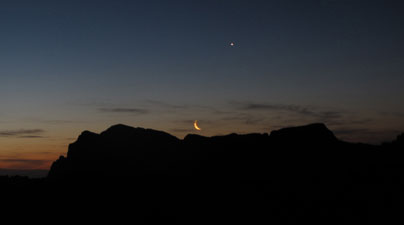 The crescent moon sets over Precipitous Bluff (watched over by Venus) |
|
|
    |
Day 7 – Wylly Plateau to Ooze Lake (11 hours) (9.5km - 680m ascent – 760m descent) |
|
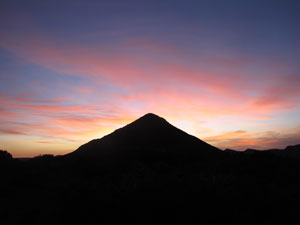 Sunrise over the pyramid of Mt Wylly |
 Once more into the spiky scoparia scrub |
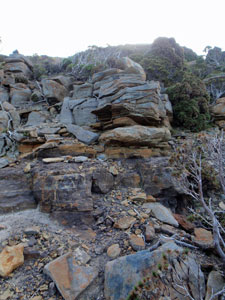 Interface between sedimentary and volcanic rock layers on Mt Wylly |
|
||
|
||
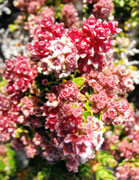 |
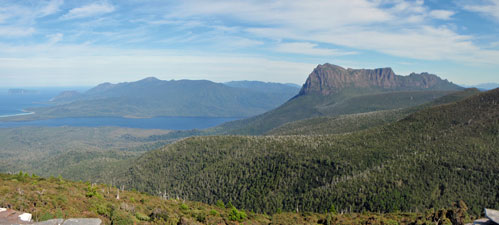 View back across the scrubby spurs to Precipitous Bluff |
 |
|
 And yet more scrubby "track" |
|
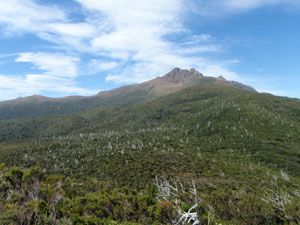 The scrub-cover route to Pindar's Peak |
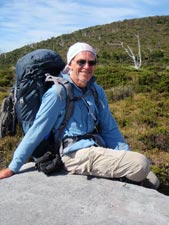 A tea-towel can be a good makeshift hat |
|
|
||
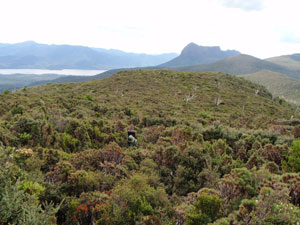 The climb up Pandani Knob |
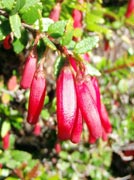 |
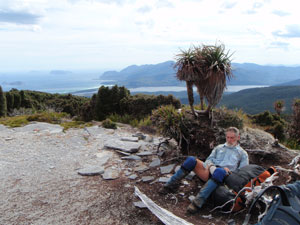 Time for a break on Pandani Knob |
|
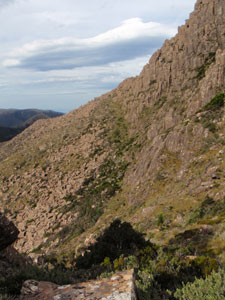 Traverse beneath the north face of Pindar's |
|
 Closing in on Pindar's Peak |
 This country is so remote, the odd Tyrannosaurus still roams |
|
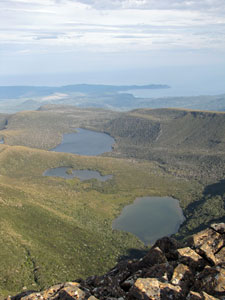 View south from Pindar's Peak over Oval Lake and smaller tarns to South-East Cape |
|
|
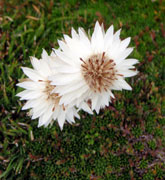 |
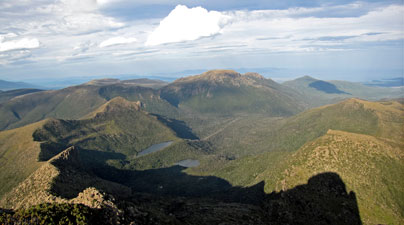 View to the north-east from Pindar's toward Mt La Perouse |
|
|
||
Rupert had not climbed the peak, but had gone ahead to try and find a camp site. The long shadows told me that it was definitely time to get going as well. Once I got down from the summit and put on my backpack again, the descent continued on a steep, but well-defined track. It sidled around the lee side of the ridge, with great views over another set of glacial lakes. |
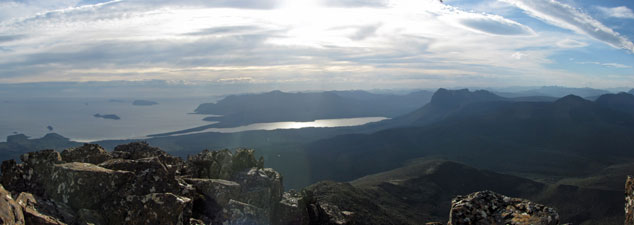 Western panorama from the top of Pindar's Peak |
|
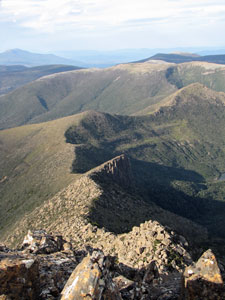 Afternoon shadows on the route ahead to Maxwell's Spur in the distance |
While there were possible campsites here, Rupert decided that we should push on to Ooze Lake where water was certain and shelter more likely. We crossed the sharp ridge to its windward side to be blasted by a fierce westerly. Good point about not stopping here! A series of cairns now led us across the open shaly slope, eventually descending to reach the pretty Ooze Lake.
|
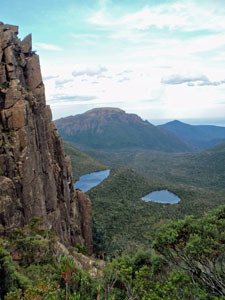 Looking down on two more glacial lakes from the northern spur of Pindar's |
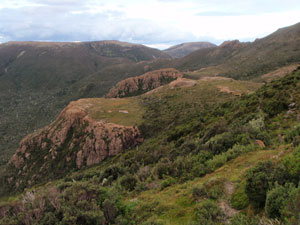 Near Ooze Lake - with Maxwell's spur in the background |
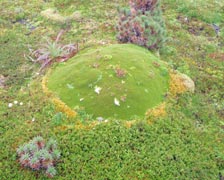 |
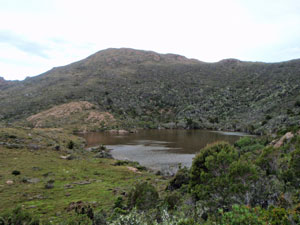 Ooze Lake beneath Knife Mountain |
This glacial lake lay in a type of cirque backed by Lake and Knife Mountains, well protected from the westerlies. It had taken 11 hours to get here, but it was a great spot. I could even soak my feet and hair and feel slightly clean again.Tonight the lullaby was provided by the frogs of Ooze Lake and by the time I fell asleep, I had already started to black out the memories of the infernal Southern Ranges scrub. |
||
    |
Day 8 – Ooze Lake to Lune River (11½hours) (18.5km - 460m ascent – 1190m descent) |
|
|
|
|
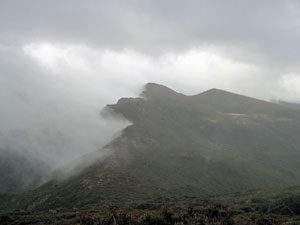 Cloud streaming of the rim of Knife Mountain
|
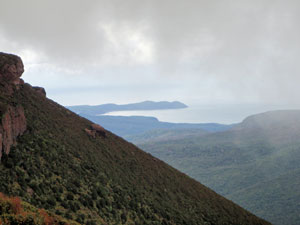 Misty view out toward South-East Cape
|
|
|
|
|
|
||
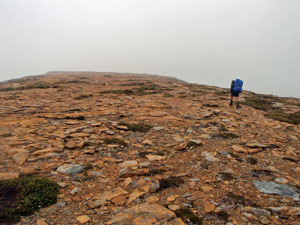 Crossing the dolerite shingles of Hill Four |
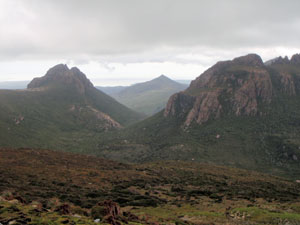 View of Little Hippo and Hippo Mountains |
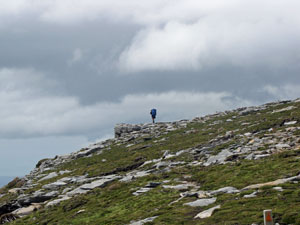 On the crest of Hill One |
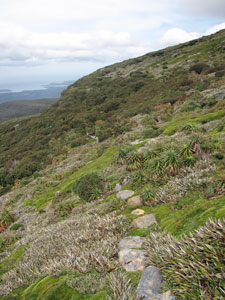 Japanese garden on the side of Moonlight Ridge |
|
|
 The scrub-covered plain of Moonlight Flats |
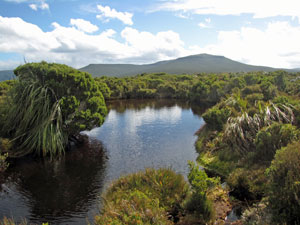 One of the Bullfrog Tarns |
|
|
 View to the east over the Huon Estuary and Bruny Island |
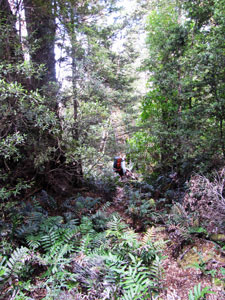 Back into the forest for the descent to Lune River |
|
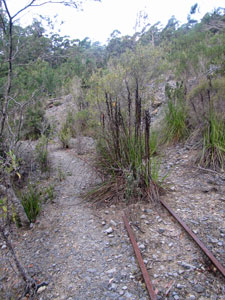 The old railway line from Ida limestone quarry |
|
    |